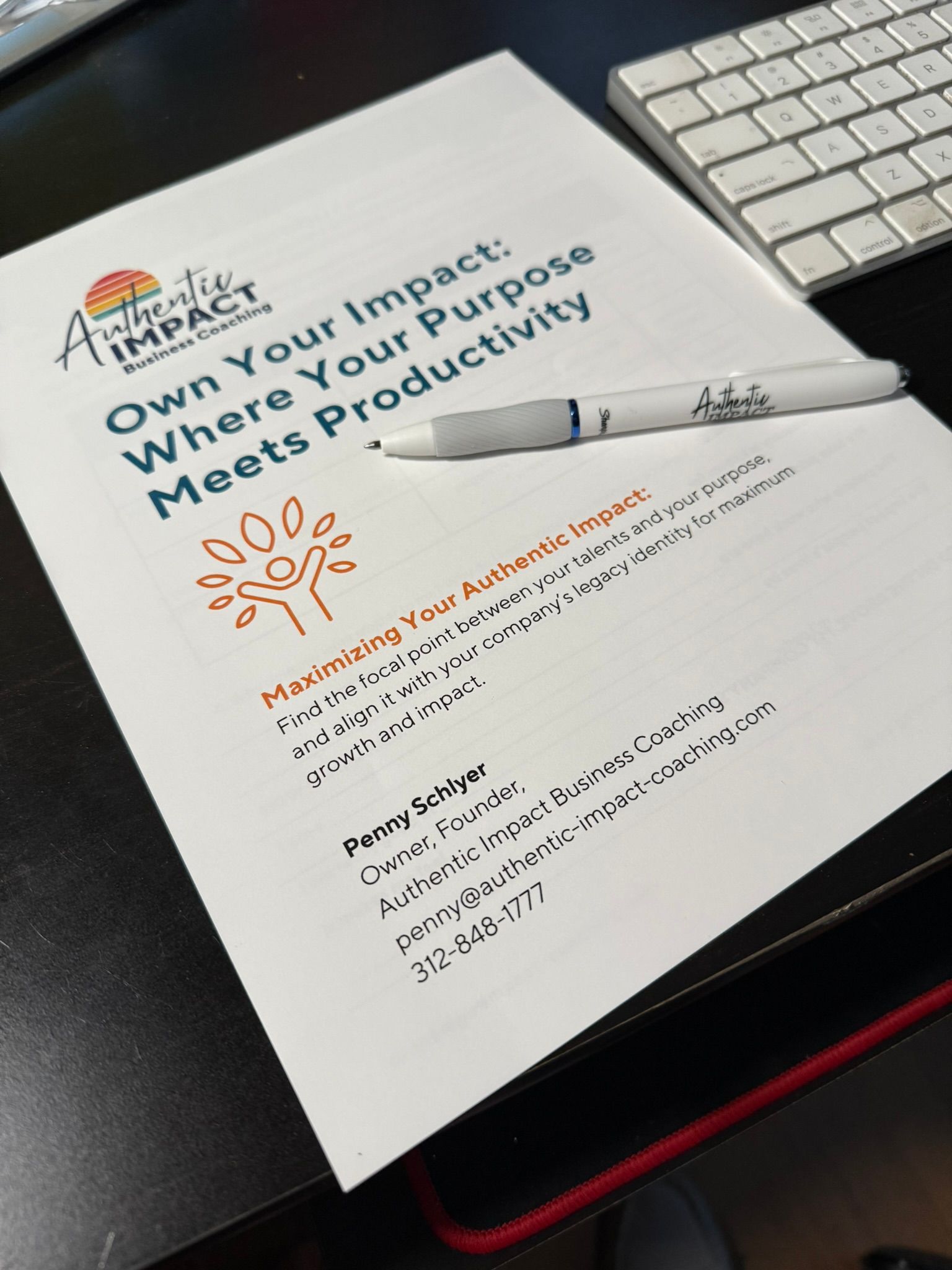Imposter Syndrome leads to spending your time proving rather than progressing
It’s natural. If you’ve ever stepped into a new role, taken on a major initiative, or made a bold move in your career, you’ve likely heard your little, yet powerful voice saying,
- “Am I really ready for this?”
- “Do I belong at this level?”
- “What if they don’t respect me?”
- “What if they find out I’m not as capable as they think?”
This is imposter syndrome. And while it can feel like a sign of weakness or fraudulence, I challenge you to reconsider.
It’s actually something very different. It’s a signal that you’re growing.
The Leadership Truth: Doubt Is a Side Effect of Growth
Imposter syndrome doesn’t show up when you’re coasting. It shows up when you’re expanding, stepping beyond your comfort zone and into new levels of visibility, responsibility, and influence.
In fact, the further you rise, the more likely you are to encounter it. Why? Because leadership isn't about having all the answers, it's about navigating ambiguity with integrity. And that’s uncomfortable.
What if, instead of resisting imposter feelings, you took a step back and learned to decode them?
What’s Hiding Inside the Doubt?
At Authentic Impact Business Coaching, we coach leaders to identify the root belief behind the feeling of self-doubt, and then reframe by asking, “What strength is this doubt pointing to?”
What if your Imposter Thought was actually a Hidden Leadership Strength? Consider the following...
- “I’m not qualified” = I have the humility and the drive to learn
- “They’ll see through me” = I am committed to be authentic
- “I don’t want to fail.” = I hold myself to high internal standards and accountability
- “Others are better than me.” = I respect excellence in others and want to emulate it
- “What if I succeed?” = I understand and respect the weight of leadership
These aren’t signs of weakness. They’re signs of conscience, character, and care; the very qualities great leaders are built on.
Reframing the Narrative: From Imposter to Insight
Think about Imposter Syndrome differently. What if it was never about being inadequate, but about being in transition?
Here are some mindset shifts:
From: “I don’t belong here.”
To: “I’m evolving into the person who does.”
From: “I’m not as capable as they think.”
To: “They’re seeing potential and I’m still learning and evolving.”
From: “I feel like an imposter.”
To: “I’m growing into new leadership territory.”
The discomfort you feel isn’t false, it’s feedback. It means your role is stretching you, and you’re right there to rise to the challenge.
Turning Insight Into Strength
The executive coaching we provide focuses on practical mindset and behavior alignment. When leaders feel imposter syndrome, we encourage five grounded steps:
- Name the Fear: Acknowledge what the doubt is actually about. Unspoken fear breeds anxiety, named fear invites clarity.
- Ground in Evidence: Look at your track record, recent results, and trusted feedback. Facts quiet fiction.
- Reframe the Story: Replace self-judgement with self-observation. Growth isn't about knowing, it's about learning and giving yourself groom to grow.
- Simplify the Pressure: Delegate where possible. Say no where necessary. Let go of trying to prove and instead focus on the impact you are making.
- Act in Alignment: Courage doesn't require certainty, just commitment. Take small actions to build the muscle of being outside your comfort zone and reflect on who you're becoming.
Final Thought: Leadership Isn’t the Absence of Doubt
The leaders who grow the most are rarely the ones who never doubt themselves. They’re the ones who learn from their doubt, lead through it, and use it to sharpen their self-awareness.
So the next time imposter syndrome shows up, don’t shut it down. Ask it what it’s trying to teach you. You might find that underneath the discomfort is a deeper version of the leader you’re becoming.
Think of a recent moment when you felt self-doubt. What strength or value might that doubt be pointing to?
Want to discuss how Executive Coaching can help your team? Book a complimentary coaching call to find out.











